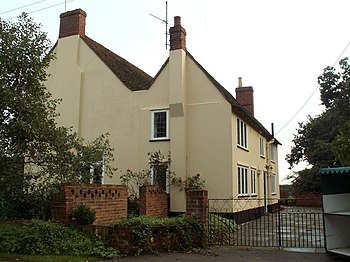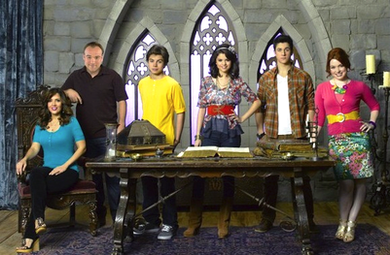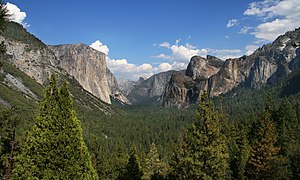- The Festival of Frugality #278 The Pure Peer Pressure Edition is up. All of your friends are reading it. http://bit.ly/aqkn4K #
- RT @princewally: Happy StarWars Day!: princewally's world http://goo.gl/fb/rLWAA #
- Money Hacks Carnival #114 – Hollywood Edition http://bit.ly/dxU86w (via @nerdwallet) #
- I am the #1 google hit for "charisma weee". Awesome. #
Property Managers
As of last Monday, we don’t have any tenants in our rental house.

That makes me sad.
It makes me sadder that we were too nice and gave them an extra week free to get their stuff moved out.
Now we get the fun job of painting, replacing the linoleum, and probably cleaning the place up to get it ready for new renters that we haven’t found yet.
New renters.
Ick.
Now, we could put an ad on Craigslist and try to find renters ourselves.
Background checks.
Credit checks.
Interviews and walk-throughs.
Then, when we find someone, we’ll be collecting rent and dealing with any whiny issues that come up.
Yuck.
Or….
We can hire a property manager. The big name property management company in our area charges a $99 set-up fee plus $80 per month.
That covers:
- Rent collection
- Coordinating maintenance
- Accounting
- All of the other mundane details
If we add on the tenant-finding service, we’ll be paying them one-month’s rent, but they’ll handle the showings, advertising, background checks, and the lease. And their average tenant placement is 19 days. Another house in the neighborhood that used them had the house rented in about a week.
That moves our landlording firmly into the passive side-hustle category and all it costs us is (essentially) one and a half month’s rent with the added bonus that we’ll be asking the right amount for rent according to the market, instead of guessing. Our last tenants were probably paying $300 too little.
I think the property managers are the way to go, but I have absolutely no experience here.
Have any of you used a property manager? Was it good? Bad? Hell-on-Earth?
Selena Gomez: Can Child Stars Make It As Adults?
Selena Gomez is no longer the innocent yet rebellious Alex from Disney’s hit show Wizards of Waverly Place. In fact, the quirky and wholesome child star who was beloved by so many young women has now become a scantily

clad pop star that is singing risque lyrics to her on again off again pop star boyfriend Justin Beiber. Her transition to adult stardom has not been an easy one, and many believe that her role in “Spring Breakers” is a sign that she has officially entered adulthood and kissed her teen-friendly role preference in the past. But unlike other famous Disney child stars like Lindsey Lohan and Britney Spears, Gomez has had a relatively smooth path to adult stardom with only minor bumps in the road. But many people are asking themselves whether or not child stars can actually make it as adults, or whether their career is over once their cute phase stages.
Child stars are aware of the fact that they are always being watched. They become the idols of their young fans, and these young idols rely a lot on their cuteness to become a celebrity. But transitioning from a cute kid to a talented adult actor can be a difficult feat. Not only does the star have to earn a new fan base, they also must find a new identity and decide which types of roles they are willing to take now that they are a mature adult able to make their own decisions. Sometimes, even children who do not fall into the drug and alcohol trap, find it difficult when they are given control of their own careers without their guardian’s rules.
The Public is Less Receptive to a Child Star Turned Adult Star
Die hard Wizards of Waverly Place will always see Selena Gomez as the lovable yet comedic Alex Russo. While this was her most popular role, it is the role that will makes her transition into more mature roles difficult. The public is less receptive to an adult Selena Gomez, clad in bra tops and short shorts, because they do not realize that she has matured. When the public shuns a child star for taking on more adult roles, the star simply is not sought after for movies and sitcoms. Young female child stars tend to be judged much more than their male counterparts. In fact, Justin Timberlake and Ryan Gosling are both very successful in the acting scene, and they were both Mouseketeers.
It is possible for a child star to make it as a adult, but the person must have thick skin and be prepared for a publicly criticized transition. Many child stars simply choose to retire once they have outgrown the ability to take on youthful roles, and others are not mentally prepared for the scrutiny they will face. Ultimately, a child star can have a successful career in stardom as an adult if the public is ready for the transition.
Phone Insurance
Thursday, at parent/teacher conferences, I sat on my phone and broke the screen.

Not just the glass, but the LCD.
Not a problem. I pay for Sprint’s repair plan.
Little did I know that Sprint–in their infinite #$!$%#$%–considers a phone unrepairable if there is more than one crack on the screen. That effectively means that any broken screen is a total loss.
It’s good to know my $4/month has been wasted.
Other than a phone I had stolen last year, I still own every phone I’ve ever owned. None have had water damage or anything catastrophic happen to them, so I didn’t get the replacement side of Sprint’s insurance plan.
To summarize:
- I broke my phone in a way that Sprint won’t fix, even though I pay for the fixit plan.
- My phone costs $600 when you aren’t signing a new contract.
- My phone has the most expensive LCD to replace at the moment.
The Total Equipment Protection program costs $11 per month. Given my history, that’s a waste of $11, though it would actually be a waste of $7, since I have been happy to pay $4 for the repair plan.
$7 per month since I got my first smartphone in about 2008, means I’ve saved $420 in insurance fees I haven’t used.
Today, I paid $298 to replace the LCD on my phone. That includes overnighting the part to the shop since it’s not stocked and I’m leaving town tomorrow.
An insurance claim from Sprint comes with a $150 deductible.
All told, I’m $270 to the good.
Would I get the insurance if I were signing papers today?
Probably not. A $7 monthly bill doesn’t hurt, while a $300 surprise does, but that’s why I have a repair fund.
Do you have insurance on your phone? Have you used it?
Colorado Insurance Laws: Do you have the Right Coverage?
Car insurance is mandatory in Colorado. Colorado law on car insurance changed in 2003 when the state changed to a fault-based system from a no-fault system. Even more requirements were added in 2009 for drivers, namely, a mandatory $5,000 in medical payments coverage.
Many of the other changes made to Colorado car insurance requirements were made to help prevent claim abuses and reduce the cost of insurance premiums for drivers in the city. The ‘tort’ or fault-based system requires that fault must be established before a claim is paid by an insurance company.
According to data released by the National Association of Insurance Commissioners, the average cost of auto insurance in Colorado was $777. This is way below the national average of $841 and far below the most expensive state, New Jersey, which had an average expenditure of $1,254 in annual premiums.
Colorado Insurance requirements
The state requires all drivers to have liability coverage at the least. This ensures that the other party and their property will be compensated in an accident that is your fault. According to insurance-comparison site, CoverHound, the minimum coverage for car insurance in Colorado should include:
- Bodily injury coverage of $25,000 for each person involved in the accident
- Bodily injury coverage of at least $50,000 for each accident the motorist is involved in
- Property damage coverage of $15,000 for each accident
Additional car insurance
Having insurance coverage meeting the minimum requirements of the law in Colorado will save you from being arrested for inadequate insurance. However, your insurance may not provide you with adequate coverage in case of an accident. Therefore, it’s important to consider the following car insurance options.
- Uninsured/Underinsured motorist coverage
While car insurance is a mandatory in Colorado, several drivers still drive without auto insurance. Figures released by the Insurance Research Council estimate that 16.2 percent of motorists in the state are uninsured. This is slightly above the 12.6 percent national average. The scary thing about not having this coverage is you never know when you’re going to get in an accident, let alone an accident with someone who’s underinsured, or uninsured altogether. As you can probably guess, if someone isn’t willing to pay an insurance premium to protect their financial means, they probably don’t have much financial means to protect in the first place, thus leaving you destitute in the event of an accident, regardless of fault. Bottom line: uninsured/underinsured motorist coverage protects your expenses in this situation.
- Medical Payments Coverage
Due to the aforementioned legislation passed in 2009, insurance providers are required to offer motorists $5,000 in med pay coverage as part of their insurance coverage. This is offered as part of every car insurance policy, and can be adjusted in $1,000 increments. You however, have the choice of opting out, but you have to send a rejection form. You can also choose to up your coverage to as much as $100,000.
- Collision coverage
Liability coverage ensures that the other party’s expenses are covered in the event you cause an accident, but what about damage to your own car? Collision coverage takes care of any damages to your car regardless of who’s at fault. The insurance also covers you for damage caused by hitting other objects with your car, such as a tree, or streetlight.
- Comprehensive cover
This ensures that you are covered for any damage that is caused to your car that doesn’t involve a collision (e.g. fire, falling objects, flood and hail). It also provides cover for the loss of your car through theft and other perils such as explosions.
If you purchase your car through a loan, your lender may require you to take out a comprehensive coverage policy. You can choose to have a higher deductible in order to reduce the cost of your premium.
Cost of violations
There are various penalties set by the state to ensure that motorists have adequate insurance. You may be penalized for failing to provide evidence of insurance or for purchasing inadequate insurance. Some of the penalties and fines include:
- A minimum fine of $500 for violations
- The addition of 4 points to your driver’s license
- The suspension of your license for up to 8 months
- Community service
It is important to understand your state laws and your own financial situation when choosing insurance. Your policy should not only meet state law requirements but your personal requirements as well. If it doesn’t, then what’s the point of having it in the first place?
This is a guest post.
How Much Does It Cost to Fight the Yosemite Fire?

The summer of 2013 has proven to be a destructive one. Brush fires have engulfed much of the Western United States, consuming large forests and chasing citizens out of their homes. The fire known as the Rim Fire is closing in one the Yosemite National Forest, one of the most popular tourist destinations in the country.
Managing forest fires in the Western United States has been a consistent struggle over the decades with budgets proving to be hard to navigate around for local, state, and federal firefighting forces. Around 32,000 individual brush fires across California and other western states has resulted in the destruction of 3 million acres of land. To battle these blazes, the U.S. Forest Service, a federal office, contracts with private, state, and local firefighting agencies by providing funding, equipment, resources, and the chemicals needed to stop the blazes. On August 19th, 2013, the U.S. Forest Service has used $967 million to fund the management of these fires. At that time, the U.S. Forest Service only had $50 million left in its budget.
Why is the budget so affected this year compared to other years? For example, in 2012, the total amount of forest fires the U.S. Forest Service answered to totaled to around 67,700 fires and the destruction of 9.3 million acres of land. However, budgetary choices made by the Congress over the decade have made available funds for the U.S. Forest Service hard to find. In addition, the budget sequester, which went into effect this budget year, subtracted $115 million from federal wildfire management programs.
In addition, individual states are seeing their state budgets affected. California had to declare a state of emergency on August 23rd, 2013. One example of a damaging effect to California included the Rim Fire destroying much of the infrastructure near the Hetch Hetchy Resovoir, which supplies water and hydroelectric power to much of San Francisco. As a result of the damage, the city of San Francisco and neighboring municipalities that use the same energy source, spent over $600,000 in replacement water and energy. Private costs are also immense; thousands of homes and private property have been destroyed across the west, including from the Rim Fire. The Rim Fire near Yosemite threatens the national park, the metropolitan San Francisco area’s water and energy supply, and the major municipalities near. By August 25th, 2013, 143,980 acres near Yosemite National Park have been engulfed by the Rim Fire with only 7% of the fire contained. The Rim Fire is approximately 20 miles away from Yosemite National Park and although Route 120 heading into the park is closed, park officials are hopeful that the park will not be affected by the fire thanks to its current distance. If the Rim Fire expands to the Yosemite National Park, the costs for the U.S. Forest Service from the fire damage and trying to contain the fire could catapult higher.


